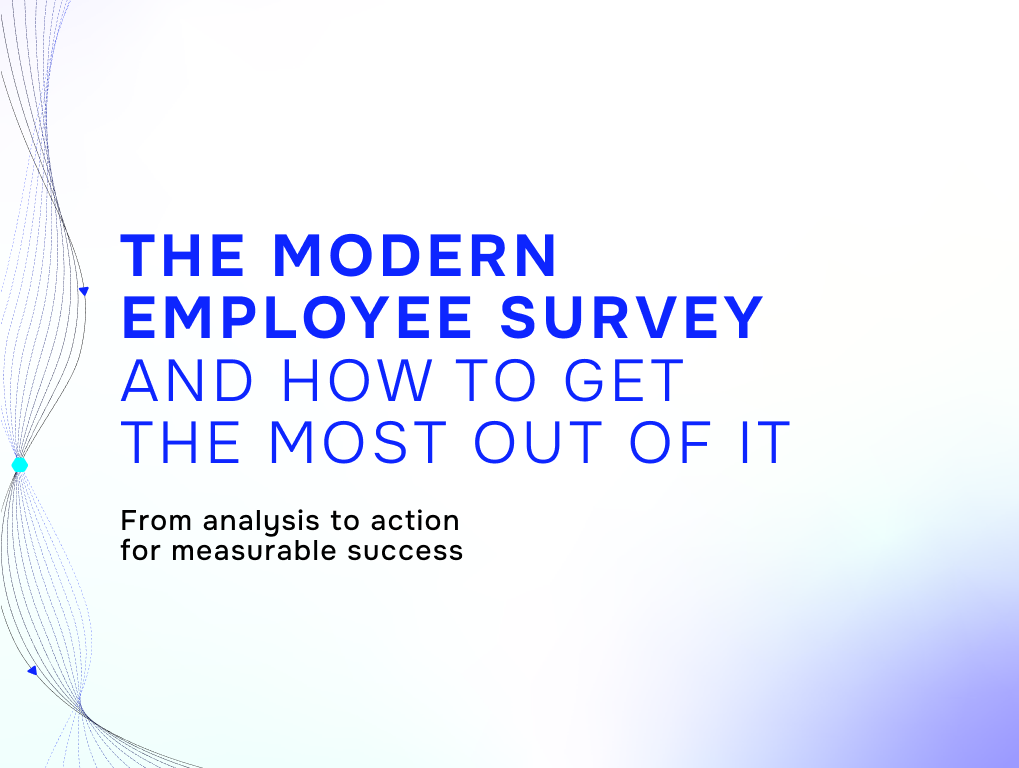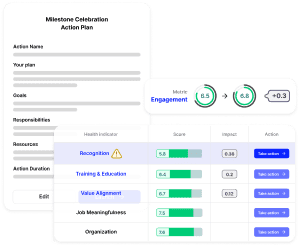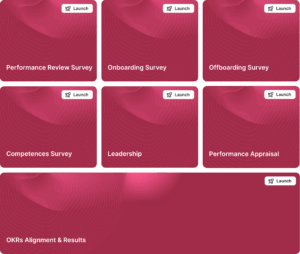Preventing Burnout: Strategies to Increase Employee Engagement and Drive Productivity
Burnout has become a critical challenge, especially in Europe and Switzerland, where its impact extends far beyond individual well-being, affecting entire teams and organizations. HR leaders today are increasingly aware that unaddressed burnout can erode productivity, team morale, and profitability.
In Europe, only 13% of employees say they feel truly engaged in their work—far behind countries like the U.S., where the engagement rate is about 33%, and below the global average of 23% [Gallup’s 2024 Global Workplace report]. In Switzerland, burnout-related absences are rising, as stress takes a toll on the workforce and drives up absenteeism. According to the Gallup report, both stress and burnout have hit historic highs worldwide, with no signs of improvement. The report further reveals that people’s mental wellbeing has been worsening over the last 10 years, with stress, sadness, anxiety, anger and worry reaching the highest levels since the Gallup surveys began. Jon Clifton, Gallup CEO, notes that “this is a concerning trend that organizations can no longer ignore.”
The situation is particularly acute in high-pressure industries like finance, healthcare and technology. In Switzerland, for example, the tech and financial sectors face significant challenges with employee stress and burnout [2024 Gallup report]. Rigid work structures, a lack of flexibility, and a cultural emphasis on long hours have taken a toll, with many Swiss employees feeling unable to disconnect and recharge.
The True Cost of Burnout to Businesses
Burnout comes with high costs, especially in the DACH region. Swiss organizations, in particular, bear the financial impact of productivity losses and absenteeism tied to burnout. A 2022 report from SWICA highlights that work absences due to stress are on the rise, with workload and lack of boundaries as major contributors. The average period of incapacity for work for psychological reasons lasts around 218 days and 95 percent of these are full-time sick notes [SWICA].
Gallup’s 2024 Global Workplace report makes the economic argument clear: burnout and disengagement collectively cost businesses nearly $9 trillion worldwide every year. In contrast, companies with engaged employees report up to a 19% boost in operating income, showing the benefits of creating a supportive work environment [Towers Watson, Global Workforce Study].
Understanding the Roots of Burnout
Burnout isn’t merely feeling overworked; it’s an emotional, mental, and physical exhaustion that builds up over time, often due to chronic stress and a lack of support. Common triggers include overwhelming workloads, unclear job expectations, minimal support and workplace conflicts. When these issues go unaddressed, burnout not only harms employees’ health but can also significantly decrease the productivity and engagement of the company.
These insights are echoed in atwork’s *internal research. Our data quantifies factors that have a statistical relationship with stress management challenges, identifying major contributors such as:
- Workload Management *(β = 0.398)
- Work/Life Balance (β = 0.291)
- Emotion Management (β = 0.134)
- Feedback (β = 0.197)
Additional influences include Social Support (β = 0.101), Pay & Benefits (β = 0.076), Leadership Support (β = 0.059), Value Alignment (β = 0.052), and others.
For example: The value between employee engagement and work performance (β = 0.480), which is much higher than the statistical relationship value between ibuprofen and the reduction of pain (β = 0.140).
The Role of Work-Life Balance
Apart from workload management, achieving work-life balance is essential for preventing burnout and a good Employee Well-Being. For employees, it means establishing boundaries, managing stress, and finding time for personal interests. Companies can help by tailoring work-life policies to meet individual needs rather than applying a one-size-fits-all approach. Asking employees directly what they need to achieve balance can reveal insights that enable organizations to support their teams faster and more effectively.
Key Strategies to Address Burnout and Drive Engagement
For organizations looking to address burnout, here are key focus areas based on research and atwork’s insights:
1. Balanced Workloads
Managing workloads is essential for reducing burnout. Ensuring that tasks are equitably distributed and promoting teamwork can lighten the burden on individuals, reducing stress levels. Research from atwork shows a strong statistical relationship (*β = 0.677) that creating manageable workloads will improve work-life balance, underscoring the importance of fair workload distribution [*internal atwork research data].
2. Empowering Employees and Building Positive Work Relationships
Providing employees with influence over their work, along with nurturing open communication and a supportive team environment, creates a more engaging workplace. atwork’s research shows that job influence (β = 0.267) and a strong work-life balance are closely related.
Trust among peers, social support, and an atmosphere that values creative problem-solving promote engagement and decrease burnout risk. These dynamics also build alignment with company values, fostering a sense of purpose and commitment among employees.
3. Clear Communication and Regular Recognition
Effective communication goes both ways. Establish methods to keep communication open across all levels, both formally and informally. Strong communication and consistent recognition make employees feel appreciated and motivated, boosting team morale.
Set up a system for employees to voice suggestions, share concerns constructively, and participate in decisions that affect them. Employees feel more engaged when their contributions are acknowledged, fostering a deeper sense of purpose and loyalty.
4. Flexible Work Arrangements
Employers who offer flexibility work programs experience lower levels of burnout and higher levels of retention, engagement, and productivity. Flexibility is now a leading reason employees stay with an organization and give their best work. Multiple studies over decades have shown that companies supporting work-life balance through flexible schedules and remote options achieve improved productivity, growth, and organizational performance.
In Europe, countries like France, Belgium, and Spain have adopted “right to disconnect” laws, emphasizing the value of rest for productivity. HR leaders might consider similar policies to help employees fully disconnect outside work hours, which can lower burnout and raise engagement [Eurofund].
5. Programs for Wellness and Growth
We are becoming increasingly aware of the importance of offering a variety of options for fostering employees’ mental, physical, and emotional health, as well as self-directed self-improvement. In addition to robust health insurance plans and flexible spending accounts to pay for medical expenses or dependent care, employees want to know that their workplaces support them in becoming the best people they can be.
Companies that invest in personal development and well-being programs demonstrate their commitment to their people. This might mean offering flexible schedules for education, providing stipends for skill development, or offering access to resources like meditation apps or gym memberships. You rather stay at a company where you can self-develop, right?
6. Employee Listening & Preventive Insights
Leveraging feedback and data to understand employee needs enables HR to create a more engaging, supportive workplace. Monitoring employee well-being and spotting early signs of burnout allows HR to implement preventive measures quickly and effectively. Tools for People Analytics and Employee Listening let HR teams assess engagement levels across the organization, detect burnout risks, and make proactive adjustments before issues escalate. By using data-driven insights, HR can help foster a resilient, innovative workforce and ensure employees feel supported when it counts.
Moving Forward: Building a Resilient Workforce
Burnout is a challenge that cannot be ignored. In Switzerland and across Europe, burnout-related absences continue to rise, emphasizing the need for proactive employee well-being initiatives. By focusing on workload management, flexibility, wellness programs, and fostering an appreciative culture, HR leaders can cultivate a healthy and engaged workplace.
atwork’s AI-powered insights empower HR departments to stay ahead of burnout risks and foster a productive work environment that benefits both employees and the business. With atwork’s tools, HR leaders can create the foundation for a resilient, engaged workforce that is prepared to drive business success.
*[internal atwork research data] – the value of ( β = XX) is showing the one-directional statistical relationship value between the trigger and the effect.
You may also like

Engaged to Care: Transforming Swiss Hospital Workforces through AI and Strategy
Swiss hospitals are facing rising burnout, absenteeism, and disengagement among staff — but AI-powered tools could be the key to turning things around. This study, conducted by students at Lucerne University of Applied Sciences and Arts in collaboration with atwork, explores how strategic HR technology can help transform employee engagement in the healthcare sector.

Optimizing Employee Engagement through Modern Surveys
Equip yourself with the knowledge and tools to drive organizational success and create a thriving workplace culture.

How do you get meaningful results from employee surveys?
We all know what it’s like: you get surveys in your e-mail inbox, requesting you to evaluate a service or your own employer. The questions and answers you can select are often the same. So, most people just sign off. A low response rate is not only irritating. If the rate is too low, the […]





 Guides
Guides  Studies
Studies